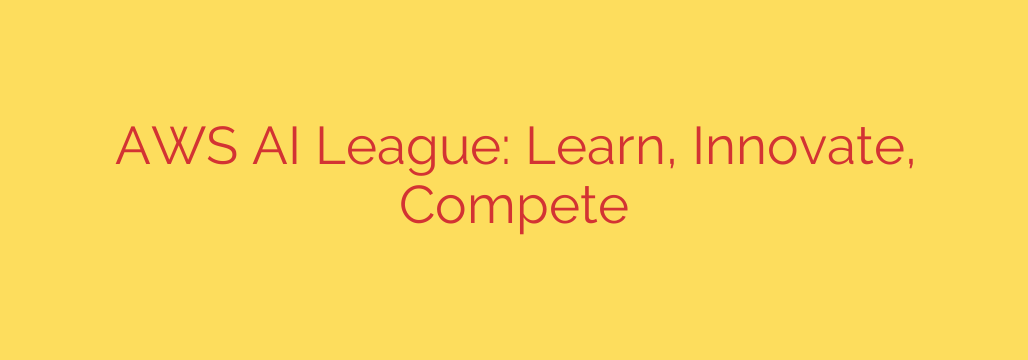
Unlock the Power of Reinforcement Learning Through Autonomous AI Racing
Learning Artificial Intelligence and Machine Learning can often feel like a purely theoretical exercise. You read books, watch tutorials, and study algorithms, but bridging the gap between theory and practical, real-world application remains a significant challenge. How do you move from understanding concepts to actually building intelligent systems? The answer lies in hands-on, competitive learning.
Imagine a global league where developers, from beginners to experts, compete to train an AI model that powers a virtual, autonomous race car. This isn’t just a game; it’s a dynamic and engaging platform designed to teach one of the most advanced and sought-after skills in AI today: Reinforcement Learning (RL).
What is Reinforcement Learning and Why Does it Matter?
At its core, Reinforcement Learning is a type of machine learning where an AI “agent” learns to make decisions by performing actions in an environment to achieve a specific goal. The agent learns through trial and error, receiving rewards or penalties for its actions.
Think of it like teaching a pet a new trick. A positive action (like sitting on command) gets a reward (a treat), making the pet more likely to repeat that action. A negative action gets no reward, discouraging the behavior. Over time, the pet learns the optimal strategy to maximize its treats.
In the context of autonomous racing, the process works like this:
- The Agent: Your AI model.
- The Environment: The virtual race track.
- The Actions: The model decides how to steer and how fast to go.
- The Goal: Complete the lap as quickly as possible without going off the track.
You, the developer, don’t program the car with explicit instructions like “turn left here” or “slow down now.” Instead, you design a reward function—a set of rules that gives the AI model positive points for desired behaviors, such as staying near the center line, maintaining a high speed, and completing laps smoothly. The model then runs thousands of simulated laps, gradually teaching itself the ideal racing line and behavior to maximize its total reward score.
From Virtual Track to Real-World Skills
While racing a virtual car is exciting, the true value lies in the skills you acquire. The principles of Reinforcement Learning are transforming industries far beyond the race track. The ability to build models that learn from interaction and feedback is crucial for:
- Robotics: Teaching robots how to navigate complex environments and manipulate objects.
- Supply Chain Management: Optimizing inventory and logistics for maximum efficiency.
- Finance: Developing automated trading strategies that adapt to market changes.
- Personalized Recommendations: Creating systems that learn user preferences to suggest content or products.
By mastering the fundamentals through a hands-on racing competition, you are building a skill set that is directly transferable to these high-demand fields. You learn not just the theory but also the practical challenges of model training, hyperparameter tuning, and iterative improvement.
How to Get in the Driver’s Seat and Start Learning
Joining this innovative learning experience is accessible to developers of all skill levels. The platform provides a structured environment where you can build, train, and refine your models before putting them to the test.
Here’s how you can get started on your journey:
- Build Your Model: Start with a simple reward function. The goal is to get your car to complete a lap, even if it’s slow. This first step helps you understand the core mechanics.
- Train and Evaluate in Simulation: Use the virtual environment to train your model. You can watch your car attempt to navigate the track in a 3D simulator, giving you immediate visual feedback on how your reward function is influencing its behavior.
- Refine and Iterate: Is your car too cautious on turns? Does it swerve too much on straightaways? Analyze its performance and tweak your reward function to encourage better behavior. This iterative process of analysis and refinement is the key to building a high-performance model.
- Compete on the Global Stage: Once you’re confident in your model, enter it into the official league. You can submit your model to virtual races, compete against others from around the world, and climb the global leaderboard. There are divisions for all levels, from novice to pro, ensuring a fair and competitive environment for everyone.
This approach transforms learning from a passive activity into an active, goal-oriented mission. It’s a powerful way to turn abstract AI concepts into tangible results while joining a vibrant community of fellow innovators. It’s more than just a competition; it’s about building practical, in-demand skills in a dynamic and supportive environment.
Source: https://aws.amazon.com/blogs/aws/aws-ai-league-learn-innovate-and-compete-in-our-new-ultimate-ai-showdown/








